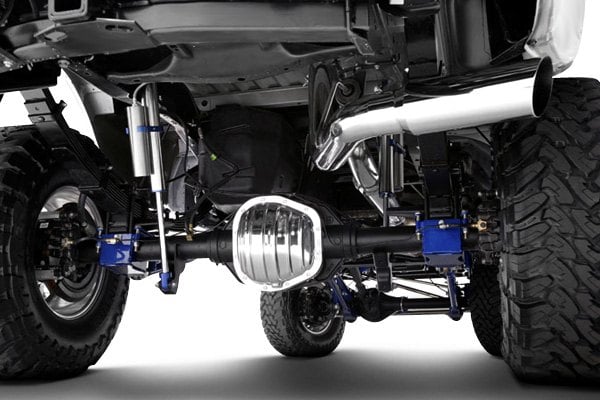
The very first thing to know about timely suspension system diagnosis is that the stability and steering control of your vehicle and, what is more important, your safety on the road depends on how often you make it.
Automotive suspension belongs to one of those car systems that are constantly exposed to high loads and thus are prone to wear and tear. Most specialists recommend inspecting suspension system after every 6,500-7,500 miles or when there are any signs of its breakage.
Taking care of a damaged or worn out suspension component early will prevent it from future mishaps as well as save you from expensive repairs down the road.
Warning Signs Of Suspension Problems
The most common symptoms of car suspension problems are excessive swaying and bouncing, even at low speeds. Also, the vehicle may not handle properly on the road and may not sit level. Sometimes these signs are subtle and easily missed, so you may not even realize that something is wrong until you're in a dangerous situation requiring a quick maneuver to avoid a horrible collision.
Dangers Of Worn-out Suspension Springs And Shock Absorbers
Having a worn-out suspension system operating in your car is a life-threatening experience. A defective suspension is not able to absorb the ruts and bumps of the road, providing you with an uncomfortable ride and making it difficult to handle the automobile. In case you need to steer quickly in order to avoid a sudden road hazard, your vehicle may sway in the opposite direction from the way you turned, causing your inside wheels to lift from the pavement and hence making your car flip over. On the contrary, when your suspension system is in good repair, it will allow for better steering control and make your car more stable during sharp turns. In a nutshell, a properly functioning suspension is an insurance of a smooth and safe driving experience.
Suspension Breakage Can Be Discovered In The Following Ways:

- Strange knocks when driving on a bumpy, rough road;
- Steering wheel play;
- Din while even driving;
- Bad stability when cruising on high speeds;
- Increased braking distance;
- Increased body tilt in turns;
- Premature ABS system operation while braking on rough surfaces, etc.
How To Diagnose Suspension System Problems
(This guide will help you through the process of identifying some common problems with your suspension system without pro assistance)
In most cases, the diagnosis of the system starts with checking the front suspension since most vital joints and pivots responsible for proper car functioning are concentrated their. Also, this type of suspension is more prone to extreme wear and tear as it is the one that meets all the rigors of the road head on.
- Check the steering linkage for play
- Check the condition of the struts and shocks (leakage from a shock absorber; broken, bent, or pitted rod)
- Inspect all four wheel bearings for roughness or play
- Inspect your front and rear control arm bushings and ball joints during the control arm diagnosis
- Check all the springs for damage
- Check for damaged or leaky CV joint boots
- Inspect the ground clearance of your vehicle (struts, coil springs, or torsion bars). The right and left side measurements should be identical.
Such a thorough inspection will allow you to get a general idea of your current suspension system state and decide on how many components need replacement.

